#Queen Elizabeth Memorial Committee
Explore tagged Tumblr posts
Text

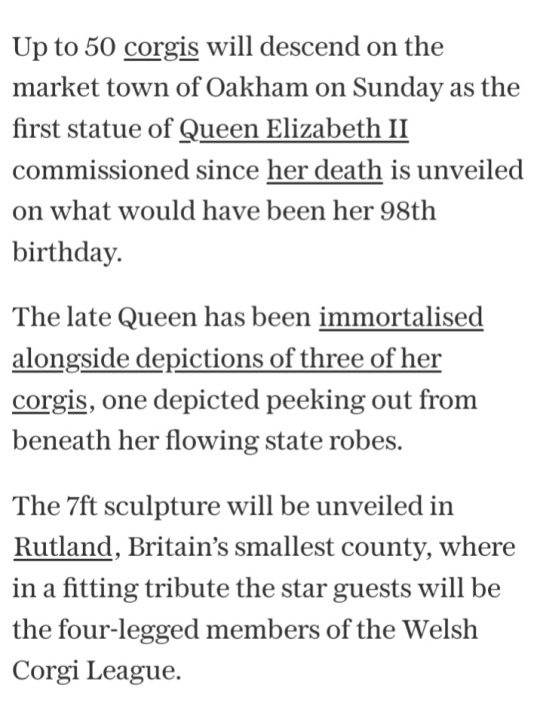
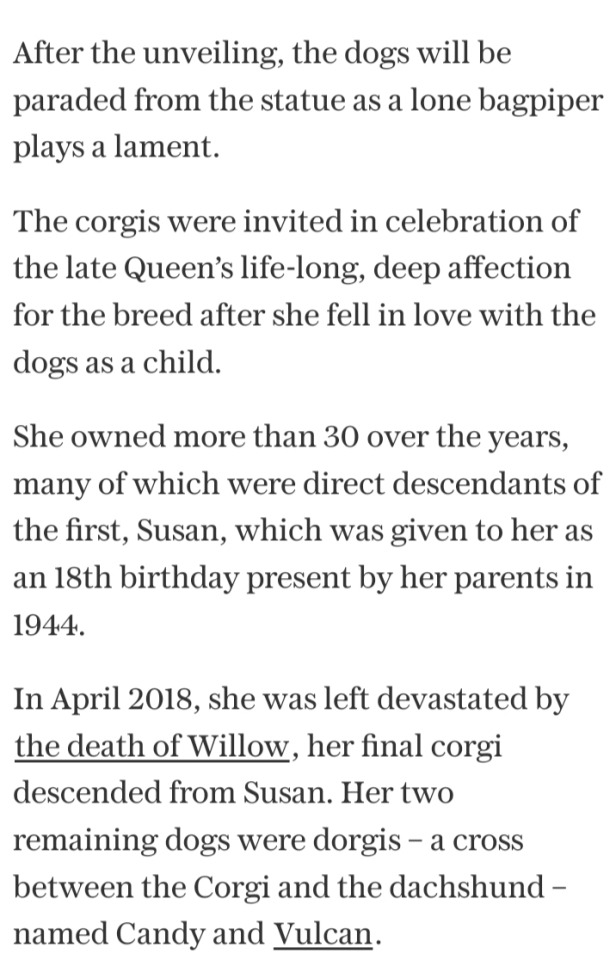
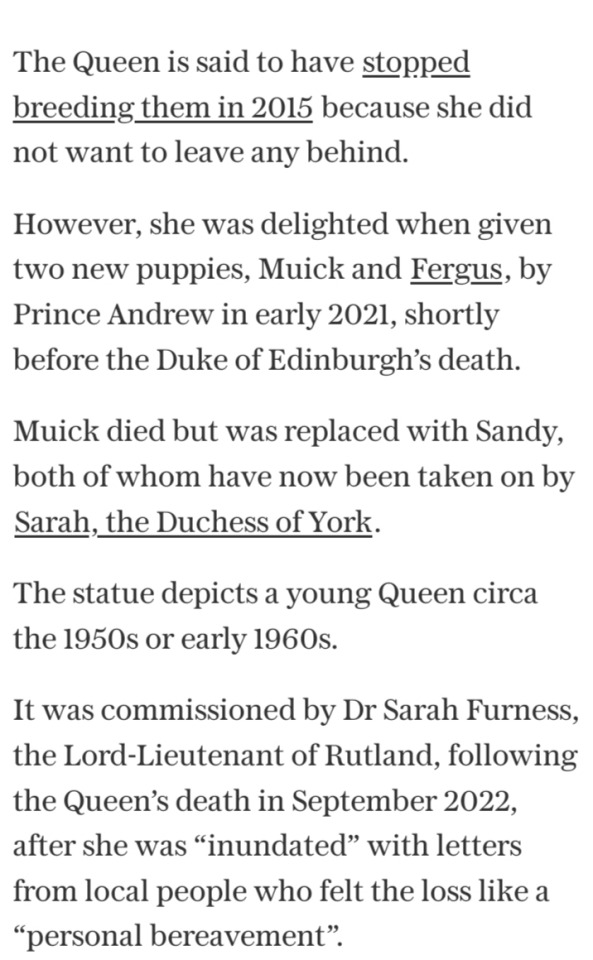



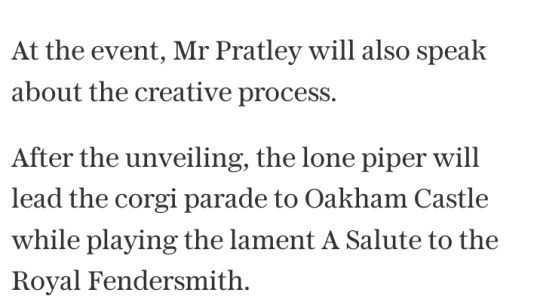

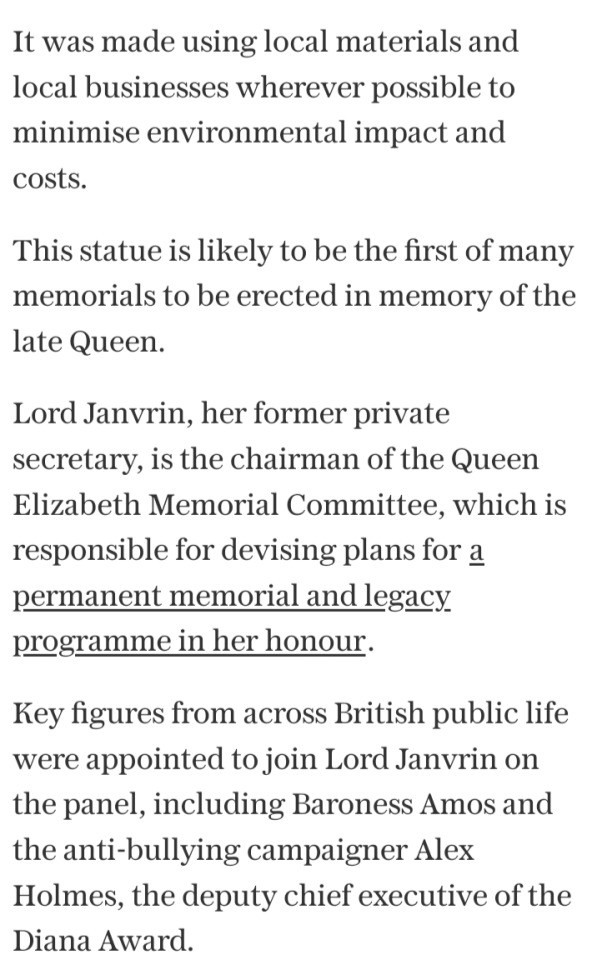
#Queen Elizabeth II#Her Majesty The Queen#statue#corgis#dogs#British Royal Family#Oakham#Rutland#Welsh Corgi League#Susan#Willow#dorgis#Candy#Vulcan#Muick#Fergus#Sandy#Dr Sarah Furness#Hywel Pratley#Ancaster limestone#Smithers Furslow#Lord Janvrin#Queen Elizabeth Memorial Committee#memorial#legacy#royal corgis#sculpture
43 notes
·
View notes
Text




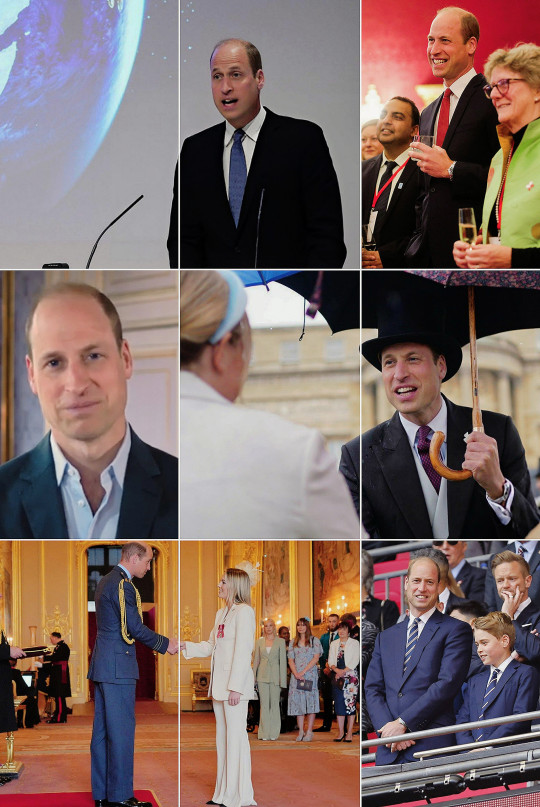

─ •✧ WILLIAM'S YEAR IN REVIEW : 𝐌𝐀𝐘 ✧• ─

𝟏 𝐌𝐀𝐘 : The Prince of Wales received Mr. Simon Patterson (Vice Chairman, The Royal Foundation) at Windsor. William supported Fields in Trust's #BarkForOurPark Campaign. 𝟐 𝐌𝐀𝐘 : He attended the UEFA Conference League Semi-Final first leg match between Aston Villa & Olympiakos at Villa Park. 𝟕 𝐌𝐀𝐘 : William received the Lord Janvrin (Chairman, The Queen Elizabeth Memorial Committee) at Windsor Castle. He received the Lord Hague of Richmond (Chairman, The Royal Foundation) at Windsor Castle. 𝟖 𝐌𝐀𝐘 : William held an Investiture at Windsor Castle. 𝟗 𝐌𝐀𝐘 : The Duke of Cornwall started his two-day tour of the Duchy of Cornwall. He spent the day in Newquay and was received by His Majesty's Lord-Lieutenant of Cornwall (Colonel Sir Edward Bolitho) at the site of the new Nansledan Housing Project. Afterwards, he met lifeguards and volunteers of the Royal National Lifeboat Institution at Fistral Beach. He met representatives of the Hollywell Bay & Newquay Surf Life Saving Clubs. Later, he arrived at St Agnes in the Isles of Scilly where he visted Troytown Farms & spent time with the community during a picnic. 𝟏𝟎 𝐌𝐀𝐘 : William spent the day in Isles of Scilly. He was received by Mrs. Jane Hartley (Deputy Lieutenant of Cornwall) at the Quay, St. Mary's. He visited St. Mary's Harbour and met crew from the 2024 World Pilot Gig Championships. Later, he visited St. Mary's Hospital in Belmont. The Duke of Cornwall also privately took part in a nature walk with Isles of Scilly Wildlife Trust. 𝟏𝟏 𝐌𝐀𝐘 : He appeared in a video message during the Steve Irwin Gala. 𝟏𝟐 𝐌𝐀𝐘 : William appeared in a video message during BAFTA TV Awards. He sent out a tweet congratulating Manchester United WFC on their Vitality FA Cup Win. 𝟏𝟑 𝐌𝐀𝐘 : The Prince of Wales was officially appointed as the Colonel-in-Chief of the Army Air Corps by King Charles III. Subsequently, he visited the Army Air Corps at the Army Aviation Centre. Kensington Palace released two unseen photos from 1999 and 2008 featuring William to mark the occasion. 𝟏𝟓 𝐌𝐀𝐘 : William released a personal tweet congratulating Aston Villa for their Champions League qualification. 𝟏𝟔 𝐌𝐀𝐘 : William attended "World Together Solving the Antibiotic Emergency" Conference at the Royal Society and was received by Deputy Lieutenant of Greater London (Reverend Canon Dr. Flora Winfield). Later in the evening he hosted a Reception at St. James's Palace. William also appeared in a video message to mark the 10th anniversary of the Elephant Initiative. 𝟏𝟕 𝐌𝐀𝐘 : Kensington Palace marked Mental Health Awareness Week via social media. Additionally, the Duchy of Cornwall unveiled funding plans of the Duchy Mental Health Strategy providing their farmers with access to support. 𝟐𝟏 𝐌𝐀𝐘 : The Prince of Wales received Major General James Bowder (General Officer Commanding London District and Major General Household Division, Welsh Guards). In the afternoon, he hosted a garden party at Buckingham Palace. 𝟐𝟐 𝐌𝐀𝐘 : William held an Investiture at Windsor Castle. 𝟐𝟓 𝐌𝐀𝐘 : William and Catherine released a personal tweet offering condolences on the passing of an RAF pilot at RAF Coningsby. William and George attended the Emirates FA Cup Final between Manchester City Football Club and Manchester United Football Club at Wembley Stadium. He also send out congratulations via a tweet. 𝟐𝟕 𝐌𝐀𝐘 : William and Catherine sent a letter to Tracey Morris offering condolences for her husband, Peter's death. 𝟐𝟖 𝐌𝐀𝐘 : William and Catherine were out shopping at a deli in Holt, Norfolk.

#review 2024#year in review : william#year in review : 2024#year in review 2024 : may#william review : may#review may#year in review 2024 : william#prince of wales#the prince of wales#prince william#william prince of wales#brf#british royal family#british royals#royalty#royals#royal#british royalty#royaltyedit#royalty edit#my photoset#will edit#13052024#king charles iii#king charles lll#photoset#princess of wales#the princess of wales#princess catherine#princess kate
41 notes
·
View notes
Text

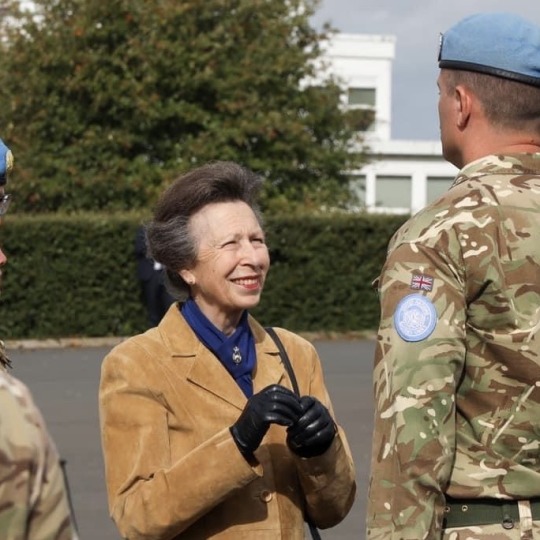

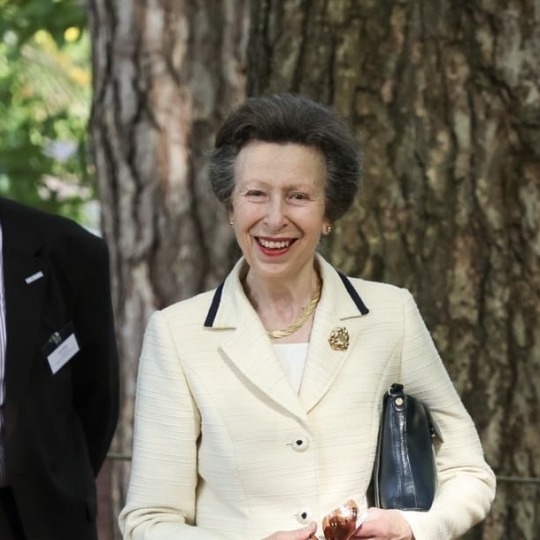
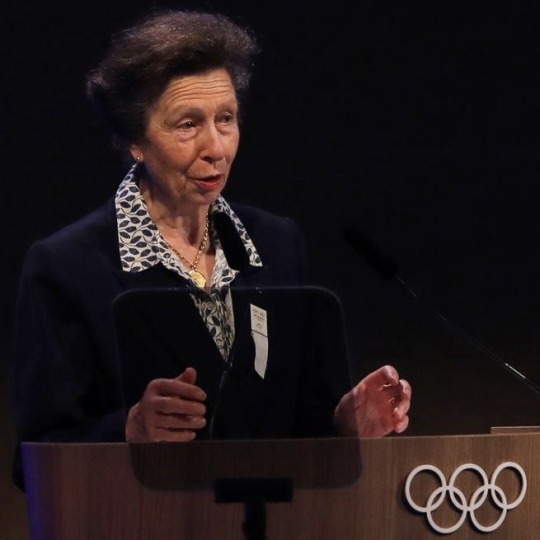
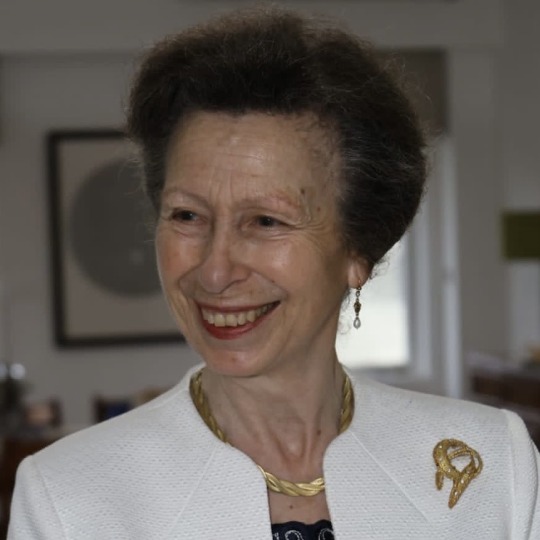


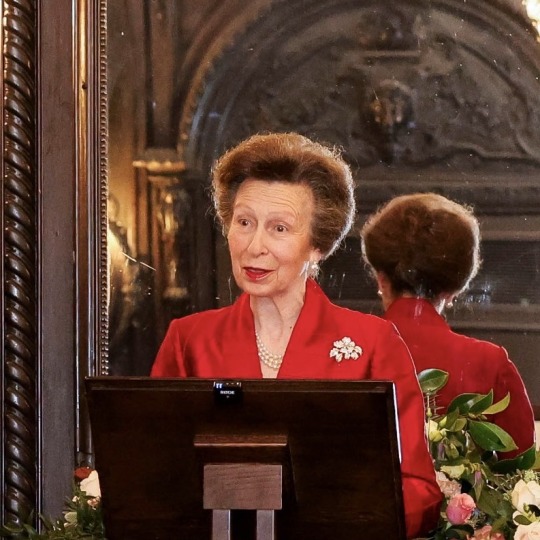
The Princess Royal’s Official Engagements in October 2023
02/10 As President of the Riding for the Disabled Association visited Avon Riding Centre, to mark its 40th Anniversary. 🐴🥳
03/10 Held two Investiture ceremonies at Windsor Castle. 🎖️
With Sir Tim As Patron of the Minchinhampton Centre for the Elderly, visited Horsfall House, Minchinhampton. 👵🏻👴🏻
04/10 In Cornwall Princess Anne visited;
Origin Coffee in Porthleven. ☕️
Camborne School of Mines at the Penryn Campus of University of Exeter, in Penryn. 🔨
St Ewe Free Range Eggs Packing Centre in Truro. 🥚
05/10 As Colonel of The Blues and Royals (Royal Horse Guards and 1st Dragoons), attended a Household Cavalry Medal Parade at Powle Lines, Picton Barracks in Wiltshire. 🫡
07/10 With Sir Tim Attended the Scotland vs Ireland Rugby World Cup match at the Stade de France in Paris. 🏴🇮🇪🇫🇷🏉
09/10 As Patron of Livability, visited Livability Millie College in Poole. 🏫
As Patron of UK Youth, visited Avon Tyrrell Outdoor Activity Centre in Bransgore. 🧗♀️
10/10 Attended a Future of UK Food Systems Seminar held by Crops for the Future at the National Institute of Agricultural Botany in Cambridge. 🚜
As Commandant-in-Chief (Youth) of St. John Ambulance, opened the new Ambulance Hub in Castle Donington. 🚑
11/10 Held two investiture ceremonies at Windsor Castle. 🎖️
Unofficial, Sir Tim attended the opening of the New Zealand Liberation Museum, Te Arawhata, in Le Quesnoy, France. 🇫🇷🇳🇿
As Patron of Scots in London Group attended a Reception at St Columba’s Church of Scotland. 🏴
Attended a Blue Seal Club Dinner at the Cavalry and Guards Club in Piccadilly, London. 🤵♂️
12/10 As Patron of the Campaign for Gordonstoun, chaired a Cabinet Meeting at the Lansdowne Club, London. 🏫
As Patron of English Rural Housing Association, attended a Parish Council Rural Housing Conference at Eversholt Hall, Bedfordshire. 🏡
Visited the Aircraft Research Association in Bedford. ✈️
As Grand Master of the Royal Victorian Order, attended Evensong and a Reception at The King’s Chapel of the Savoy, London. 🎶
14/10 Sir Tim represented Princess Anne, Patron of the Wiltshire Horn Society, at a dinner on the occasion of their centenary. 🐑
15/10 As Member of the International Olympic Committee, and Chairman of the International Olympic Committee Members Election Commission, attended the first day of the 141st International Olympic Committee Session in Mumbai, India. 🇮🇳
16/10 As Member of the International Olympic Committee, and Chairman of the International Olympic Committee Members Election Commission, attended the second day of the 141st International Olympic Committee Session in Mumbai, India. 🇮🇳
Attended an IOC Reception at Jio World Centre. 🌏
17/10 As Member of the International Olympic Committee, and Chairman of the International Olympic Committee Members Election Commission, attended the third day of the 141st International Olympic Committee Session in Mumbai, India. 🇮🇳
Visited the Commonwealth War Graves Commission Bombay 1914-1918 Memorial at the Indian Sailors’ Home, in Mumbai. 🪖
Attended a reception at the residence of His Majesty’s Trade Commissioner for South Asia and Deputy High Commissioner for Western India in Mumbai. 🌏
Unofficial Sir Tim attended a memorial service for Lord Lawson (former Chancellor of the Exchequer) at St. Margaret’s church in Westminster ⛪️
19/10 Hosted a Reception with the King, Queen and the Duchess of Edinburgh at Buckingham Palace to thank those who contributed to and were involved with the State Funeral of The late Queen Elizabeth II and with the Coronation of Their Majesties. 🥂
With Sir Tim, As Colonel-in-Chief of the Royal Army Veterinary Corps attended the launch of the Corps History Book at the National Army Museum in London. 📚
With Sir Tim, As Patron of the Royal Navy and Royal Marines Charity, attended the Trafalgar Night Dinner at the Old Royal Naval College in Greenwich, London. 🤵♀️🤵♂️
20/10 Opened Cutbush and Corrall Charity almshouse accommodation in Maidstone.
Opened the Royal British Legion Industries Centenary Village, Greenwich House, in Aylesford, Kent.
As Patron of the Butler Trust, visited HM Prison Elmley.
24/10 Held an Investiture at Windsor Castle. 🎖️
As President of the English-Speaking Union of the Commonwealth, delivered the Evelyn Wrench Lecture at Dartmouth House in London. 🏴
25/10 In Scotland Princess Anne visited;
The International Society for Optics and Photonics Photonex Exhibition at Scottish Event Campus in Glasgow. 🔍
As President of Victim Support Scotland, visited the National Office-West in Glasgow. 🫂
Peter Equi and Sons Limited Ice Cream Manufacturer. 🍦
26/10 Opened the National Honey Show at Sandown Park Racecourse in Esher, Surrey. 🍯 🐝
As Royal Patron of the Security Institute, this afternoon attended the Annual Conference at the Royal Society of Medicine in London. ⛓️
With Sir Tim As President of the Royal Yachting Association, attended a 50th Anniversary of the Yachtmaster Scheme Dinner at Trinity House, London. 🛥️🍽️
27/10 Held an Investiture at Buckingham Palace. 🎖️
31/10 In Scotland;
As Patron of the Moredun Foundation, attended a Conference at Moredun Research Institute, Pentlands Science Park, in Penicuik. 🧬
As Royal Patron of the Leuchie Forever Fund, attended a Reception to launch Leuchie House’s new strategy in Edinburgh. 🏡
As Chancellor of the University of Edinburgh, held a Chancellor’s Dinner at the Palace of Holyroodhouse. 👩🎓
Total official engagements for Anne in October: 47
2023 total so far: 400
Total official engagements accompanied by Tim in October: 6
2023 total so far: 81
#a busy bee#princess anne#princess royal#tim laurence#timothy laurence#unofficial engagement count 2023#october 2023
58 notes
·
View notes
Text
Queen Elizabeth never revoked Prince Harry's security, court papers prove | World News
New Post has been published on https://www.techpedo.com/queen-elizabeth-never-revoked-prince-harrys-security-court-papers-prove-world-news/
Queen Elizabeth never revoked Prince Harry's security, court papers prove | World News

Court documents have revealed the late Queen Elizabeth II considered it “imperative” for the Duke and Duchess of Sussex to have “effective security” after leaving the working Royal family.

Prince Harry, late Queen Elizabeth II (File Photos)
Sir Edward Young, on behalf of the Queen, emphasized the importance of their safety due to the Duke’s public profile, military service, and history of targeting by extremists.
Stay tuned with breaking news on HT Channel on Facebook. Join Now
The documents reveal the Palace’s insistence on security for the Sussexes, emphasizing the importance of safety for the family, citing the past tragic incidents and invoking the memory of Princess Diana.
ALSO READ| High Court backs Daily Mail’s ‘honest opinion’, rules out Prince Harry in the libel lawsuit
The Palace recognized the independent processes for the provision of publicly funded security, involving the UK Government, the government of Canada, and other host governments.
Contradicting the narrative that the Sussexes were cut off by the Royal family after leaving Britain, the documents challenge Prince Harry‘s portrayal of the Palace’s attitude toward his security situation. He had expressed distress and fear about life without UK personal protection officers, describing it as an “obligation” and “implicit promise” from the Palace. However, the decision regarding security does not fall to the Royal family but lies with the independent committee Ravec.
‘Always be much-loved family members’: Queen Elizabeth
The Duke’s discussions about security after leaving the Royal family, detailed in interviews and his autobiography, portrayed his desperation to retain security. The court case revolves around whether Prince Harry made a genuine offer to pay for his own security and if that message was communicated to decision-makers. The judge ruled that the Mail on Sunday may argue that Prince Harry’s team misled the public about his offer to pay for security.
The late Queen’s sentiment about the Sussexes was one of familial care, stating they would “always be much-loved family members.” After moving to Canada, where they initially received publicly funded security, they eventually sought refuge with Tyler Perry in California, including security offered by him.
ALSO READ| Prince William, Kate Middleton, and children embrace Xmas cheer in white ‘Royal Christmas Card’
The case, set to go to trial, delves into the Duke’s security discussions post-Royal family departure. Tensions between the Duke and Sir Edward Young have been noted, with Harry claiming Young’s involvement in discussions was inappropriate due to personal tensions. However, representatives argue the relevance of personal tensions in the Duke’s change in status when stepping back from royal duties.
The trial is anticipated to explore details surrounding the security arrangements and Prince Harry’s alleged offer to fund his own security, shedding light on conflicting narratives between the Sussexes and the Royal family.
Source link
0 notes
Photo
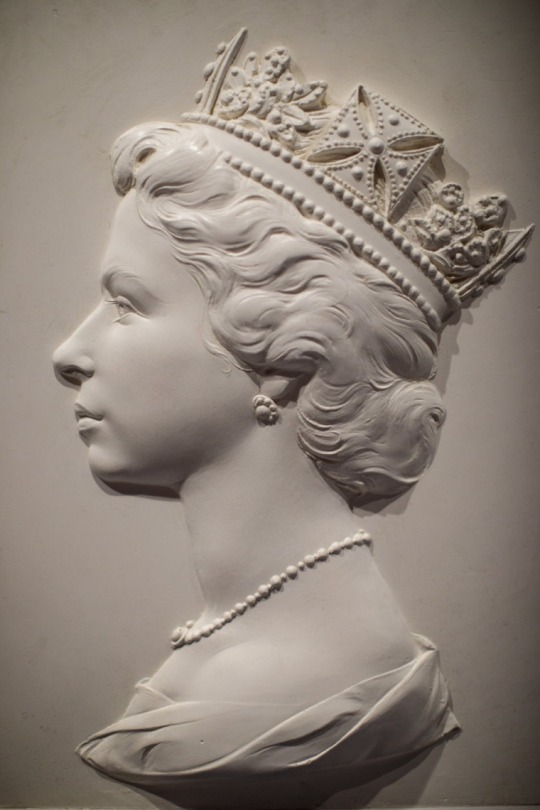


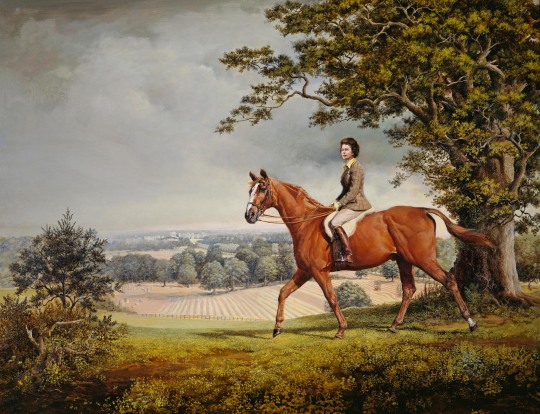
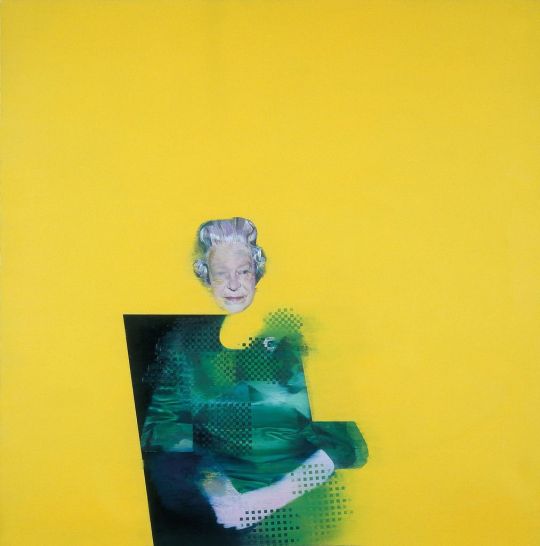
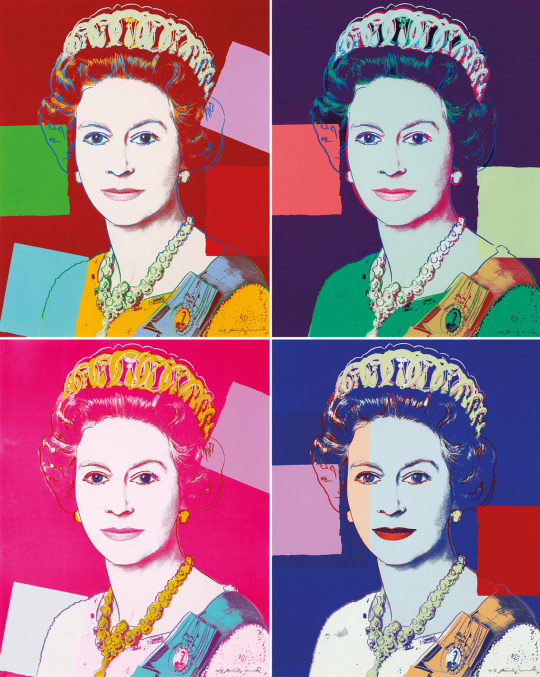
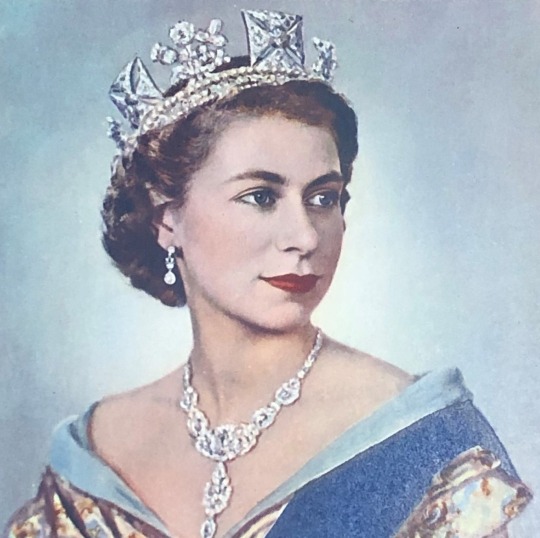

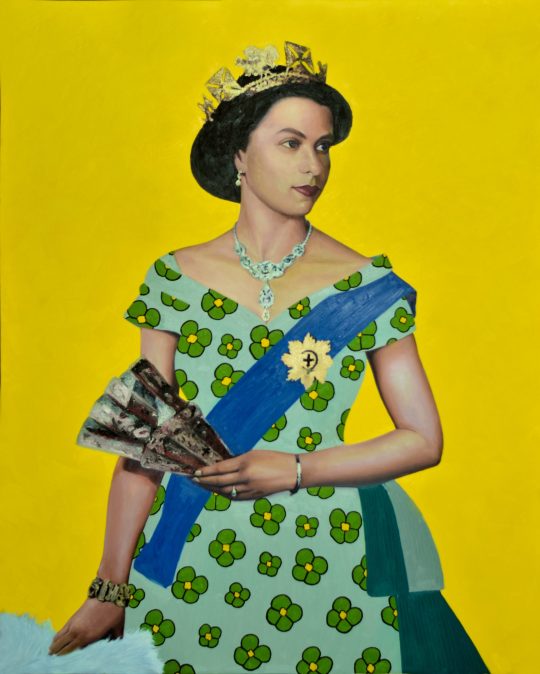
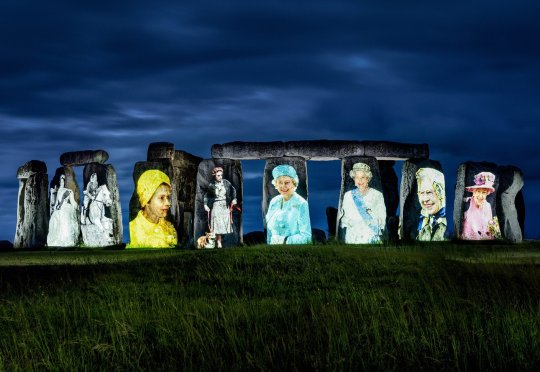
In Memory of Queen Elizabeth II: Her Majesty’s Life in Portraits
(Elizabeth Alexandra Mary; 21 April 1926 – 8 September 2022)
Queen Elizabeth II, Britain’s longest reigning monarch, passed away peacefully on Thursday at the age of 96.
The world-beloved queen was an inspiration to numerous artists and resulted in a multitude of unforgettable images in every imaginable medium during her 70-year reign.
Together, The Queen’s official portraits, nearly 1,000 of them, present a portrait of a woman unflinching in her sense of duty. But they also reveal someone who has repeatedly embraced change, new ideas and experimentation through her sitting for such a wide range of portrait artists since she became Queen in 1952.
Arthur Machin’s portrait used on postage stamps. Photo: Jack Taylor/Getty,
If official imagery helps to mythologise a monarch, Arthur Machin did more to epitomise the idea of Queen Elizabeth than any other artist. Commissioned by the Stamp Advisory Committee, Arthur Machin developed his profile of the Queen in 1967. Known as the “definitive” in philately circles, it has since been reproduced more than 220 billion times and is still used on stamps today.
“Queen Elizabeth II” by Pietro Annigoni, 1955. Tempera, oil and ink on paper. Fishmongers' Hall, London,
“Equanimity” by Chris Levine, 2004. Gelatin silver print on matte fine art paper on aluminum mount, 22 × 17 1/2 in (55.9 × 44.5 cm),
“Her Majesty the Queen on Worcran” by Susan Crawford, 1977. Credit: Royal Collection Trust,
“Portrait of Queen Elizabeth II” by Justin Mortimer, 1998, Oil on canvas, © Royal Society for the Encouragement of Arts Manufacturers & Commerce,
“Queen Elizabeth II” (From Reigning Queens) by Andy Warhol, 1985. Complete set of colour screenprints on Lenox Museum Board, 100.0 x 80.0 cm (each, sheet),
“Portrait of the Queen” by Dorothy Wilding,1952 (Hand-coloured by Beatrice Johnson) taken shortly after she acceded to the throne at the age of 25,
“Queen Elizabeth II” by Lucian Freud, , 2001, Oil on canvas, 15.2×23.5 cm. Royal Collection (Buckingham Palace), London, UK,
“The Queen” by Oluwole Omofemi, 2022, (Special commission for the cover of Tatler’s Platinum Jubilee issue. Based on a 1950s portrait of the Queen holding a fan) Courtesy Sotheby’s
“Eight portraits of Queen Elizabeth II onto Stonehenge” in celebration of the Platinum Jubilee, 2022; Each picture is from a different decade of The Queen’s reign, illuminating the ancient monument’s iconic façade in a spectacular display. (Jim Holden/English Heritage/PA Wire)
#art#painting#portrait#queen elizabeth ii#queen elizabeth#elizabeth II#andy warhol#justin mortimer#oluwole omofemi#stonehenge#platinium jubilee#jim holden#iconic#dorothy wilding#beatrice johnson#chris levine#lucian freud#arthur machin#susan crawford#pietro annigoni#rip#ripelizabethII#stamp#definitive#equanimity
286 notes
·
View notes
Text

Olivia DeHavilland has sadly passed away July 25th, 2020, in Paris. She was 104 years old. 💕

Actress Olivia de Havilland in 1941 and 2016.
At 19, de Havilland made her film debut in the 1935 “A Midsummer Night’s Dream”; Warner Bros. (WB) signed her to a seven-year contract, which was standard for actors.

A Midsummer Night's Dream" (1935)
In 1944, she tackled the studio system, by filing suit against Warner Bros (WB). Her victory helped bring an end to the studio system, and redefined the business of moviemaking.
The French have great memories for the accomplishments of Hollywood’s classic stars, and de Havilland was feted not only for her chosen place of residency but for her popular identification as ‘Melanie Hamilton Wilkes’ in Gone With The Wind (pictured above, in 1939).
Described as the last surviving female superstar of Hollywood’s Golden Age, DeHavilland decamped to the French capitol in 1955, married, and then divorced her second and final husband (the late editor of superglossy Paris Match magazine), cared for her two children, basked in her French Legion d’Honneur awarded six years ago by French president Nicolas Sarkozy — and vowed to live at least another decade.
WB put her in such films as “Captain Blood” and “The Adventures of Robin Hood,” both with Errol Flynn. But she wasn’t always happy with the studio’s assignments and WB suspended her multiple times.
When de Havilland’s contract expired, Warner Bros. claimed it was owed an additional six months of work, for the time off during suspension. She countered that the contract was for seven years, not for the time actually spent working. Superior Court Judge Charles S. Burnell agreed with her, saying otherwise the contract was a form of “peonage.”
On March 15, 1944, Variety ran the headline “De Havilland Free Agent.” That set in motion the system that remains today, when actors, agents and guilds could call the shots when making a deal.
Four months later, de Havilland went to court again, seeking assurance that she could work elsewhere without interference from Warners. Again, she was successful.

Olivia de Havilland, circa 1940.
Her suits seemed risky, but de Havilland’s career thrived. Shortly after her legal victory, she won Oscars for 1946’s “To Each His Own” (1946) and “The Heiress” (1949); in all, she had five Oscar nominations. She continued to work in films like “The Snake Pit,” “My Cousin Rachel,” “Light in the Piazza” and “Hush … Hush Sweet Charlotte,” among many others. She segued into TV work, with her final onscreen appearance in the TV movie “The Woman He Loved” (1988).

"To Each His Own" (1946)

"The Heiress" (1949)
In 1965, she became the first woman to serve as president of the jury at the Cannes Film Festival. Three years ago, she recalled to Variety that at first she was intimidated, but “As the only female on the jury that year, I did enjoy presiding over a committee entirely composed of men.”

Pictured here at the 1965 Cannes Film Festival.
In November 2008, President George W. Bush presented de Havilland, then 92, with the National Medal of Arts, saying “Her independence, integrity and grace won creative freedom for herself and her fellow film actors.” Two years later, she was appointed a Chevalier (knight) of the Legion d’Honneur. In June 2017, she became the oldest woman ever to receive the British title of dame, an honor bestowed on her by Queen Elizabeth II.

Last year, for her 103rd, a photo of her riding a bicycle was posted to Facebook. Once again, Olivia de Havilland was defying expectations and challenging preconceptions. ❣

Dedicated to Mrs. Olivia DeHavilland 💞 May she rest in eternal peace 💕💕
*Sources:
Classicmoviechat.com
Wikipedia
The New York Times, 2020

#olivia de havilland#olivia dehavilland#old hollywood stars#old movies#old films#old hollywood#vintagewomen#vintagephotos#vintage hollywood#1930smovies#1930sfashion#1930s cinema#1930s#1930s hollywood#gone with the wind#a midsummer night's dream#the heiress#1965 cannes film festival#to each his own#1940s photography#1940s movies#1940s clothing#1940s cinema#1940s#warner bros#iconic#vintagefashion#vintage movies
60 notes
·
View notes
Text
Today, the Church remembers the Oxford Martyrs.
Ora pro nobis.
When Henry the Eighth of England died in 1547 AD, he left three heirs: his son Edward and his two daughters, Mary and Elizabeth. King Henry VIII had separated the Church of England from the Roman Catholic church, but he had not reformed the church's practices or doctrines.
On Henry's death, his young son Edward became King. Many of Edward's advisors tried to move the English Church in the direction of the Continental Protestant Reformation, especially the reforms of Calvinism. Three such men were Nicholas Ridley, Hugh Latimer, and Thomas Cranmer. Under the influence of such counselors, young Edward became a staunch Protestant (or at least his advisors were). Under his rule, the church services, previously in Latin, were translated into English, and other changes were made.
When Edward died, the throne passed to his sister Mary in 1553 AD, who was firmly Roman Catholic in her beliefs. She was determined to return England to union with the Pope. With more diplomacy, she might have succeeded. But she was headstrong and would take no advice. Her mother had been Spanish, and she was determined to marry the heir to the throne of Spain, not realizing how much her people (of all religious persuasions) feared that this would make England a province of the Spanish Empire.
She insisted that the best way to deal with heresy was to burn as many heretics as possible. (It is worth noting that her husband was opposed to this.) In the course of a five-year reign, she lost all the English holdings on the continent of Europe, she lost the affection of her people, and she lost any chance of a peaceful religious settlement in England. Of the nearly three hundred persons burned by her orders, the most famous are the Oxford Martyrs, commemorated today.
When Mary became Queen of England, one of her first acts was to arrest Bishop Ridley, Bishop Latimer, and Archbishop Thomas Cranmer. After serving time in the Tower of London, the three were taken to Oxford in September of 1555 to be examined by the Lord's Commissioner in Oxford's Divinity School. All three were found guilty of heresy and treason, and sentenced to death by burning at the stake.
The scholar Nicholas Ridley had been a chaplain to King Henry VIII and was Bishop of London under his son Edward. He was a preacher beloved of his congregation whose very life portrayed the truths of the Christian doctrines he taught. In his own household he had daily Bible readings and encouraged Scripture memory among his people. Nicholas Ridley became an adherent of the Protestant cause while a student at Cambridge. He was a friend of Archbishop Cranmer and became private chaplain first to Cranmer and then to King Henry. Under the reign of Edward, he became bishop of Rochester, and was part of the committee that drew up the first English Book of Common Prayer. When Ridley was asked if he believed the pope was heir to the authority of Peter as the foundation of the Church, he replied that the church was not built on any man but on the truth Peter confessed -- that Christ was the Son of God. Ridley said he could not honor the pope in Rome since the papacy was seeking its own glory, not the glory of God.
Hugh Latimer was famous as a preacher. He was Bishop of Worcester in the time of King Henry, but resigned in protest against the King's refusal to allow the Calvinist Protestant reforms that Latimer desired. Latimer's sermons speak little of doctrine; he preferred to urge people to upright living and devoutness in prayer. His sermons emphasized that all people should serve the Lord with a true heart and inward affection, not just with outward show. Latimer's personal life also re-enforced his preaching. He was renowned for his works, especially his visitations to the prisons.
Neither Ridley nor Latimer could accept the Roman Catholic mass as a sacrifice of Christ. Latimer told the commissioners, "Christ made one oblation and sacrifice for the sins of the whole world, and that a perfect sacrifice; neither needeth there to be, nor can there be, any other propitiatory sacrifice." These opinions were deeply offensive to Roman Catholic theologians.
Both Ridley and Latimer were burned at the stake in Oxford on this day, October 16, 1555.
As he was being tied to the stake, Ridley prayed, "Oh, heavenly Father, I give unto thee most hearty thanks that thou hast called me to be a professor of thee, even unto death. I beseech thee, Lord God, have mercy on this realm of England, and deliver it from all her enemies."
Ridley's brother had brought some gunpowder for the men to place around their necks so death could come more quickly, but Ridley still suffered greatly. With a loud voice Ridley cried, "Into thy hands, O Lord, I commend my spirit...", but the wood was green and burned only Ridley's lower parts without touching his upper body. He was heard to repeatedly call out, "Lord have mercy upon me! I cannot burn..Let the fire come unto me, I cannot burn." One of the bystanders finally brought the flames to the top of the pyre to hasten Ridley's death.
Latimer died much more quickly; as the flames quickly rose, Latimer encouraged Ridley, "Be of good comfort, Mr. Ridley, and play the man! We shall this day light such a candle by God's grace, in England, as I trust never shall be put out."
While convicted and sentenced on the same day as Latimer and Ridley, Cranmer was executed five months later. Thomas Cranmer was Archbishop of Canterbury in the days of Henry, and defended the position that Henry's marriage to Katharine of Aragon (Spain) was null and void. When Edward came to the throne, Cranmer was foremost in translating the worship of the Church into English (his friends and enemies agree that he was an extraordinarily gifted translator) and securing the use of the new forms of worship. When Mary came to the throne, Cranmer was in a quandary. He had believed, with a fervor that many people today will find hard to understand, that it is the duty of every Christian to obey the monarch, and that "the powers that be are ordained of God" (Romans 13). As long as the monarch was ordering things that Cranmer thought good, it was easy for Cranmer to believe that the king was sent by God's providence to guide the people in the path of true religion, and that disobedience to the king was disobedience to God.
Now Mary was Queen, and commanding him to return to the Roman obedience. Cranmer five times wrote a letter of submission to the Pope and to Roman Catholic doctrines, and four times he tore it up. In the end, he submitted. However, Mary was unwilling to believe that the submission was sincere, and he was ordered to be burned at Oxford on 21 March 1556. At the very end, he repudiated his final letter of submission, and announced that he died a Protestant. He said, "I have sinned, in that I signed with my hand what I did not believe with my heart. When the flames are lit, this hand shall be the first to burn." And when the fire was lit around his feet, he leaned forward and held his right hand in the fire until it was charred to a stump. Aside from this, he did not speak or move, except that once he raised his left hand to wipe the sweat from his forehead.
These three martyrs were only a small part of the many hundreds who would be murdered on all sides of the Reformation and Counter Reformation era. It is a scandal to Jesus Christ and his Church that those who profess to be his disciples should ever cause harm to each other or to anyone. The Church suffers still today for the grievous sins of Christians killing each other, and blaspheming by daring to claim such deeds are done in the name of God. Our sad divisions remain, and we must pray with our Savior Jesus that all our sad divisions may cease, that we may be one even as Jesus and the Father are one.
O God the Father of our Lord Jesus Christ, our only Savior, the Prince of Peace: Give us grace seriously to lay to heart the great dangers we are in by our unhappy divisions; take away all hatred and prejudice, and whatever else may hinder us from godly union and concord; that, as there is but one Body and one Spirit, one hope of our calling, one Lord, one Faith, one Baptism, one God and Father of us all, so we may be all of one heart and of one soul, united in one holy bond of truth and peace, of faith and charity, and may with one mind and one mouth glorify thee; through Jesus Christ our Lord.
Amen.

#christianity#reformation#England#martyrs#father troy beecham#troy beecham episcopal#jesus#father troy beecham episcopal#saints
1 note
·
View note
Photo
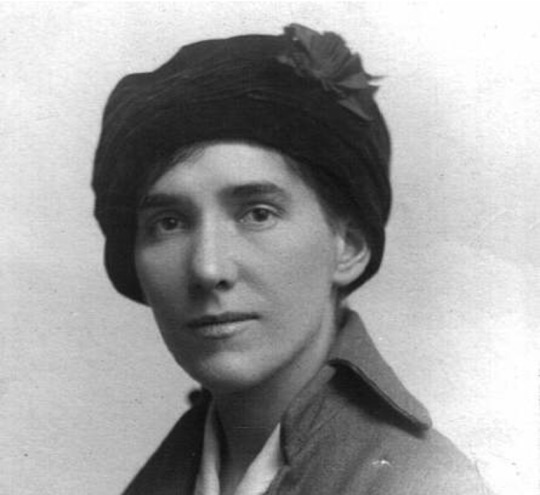
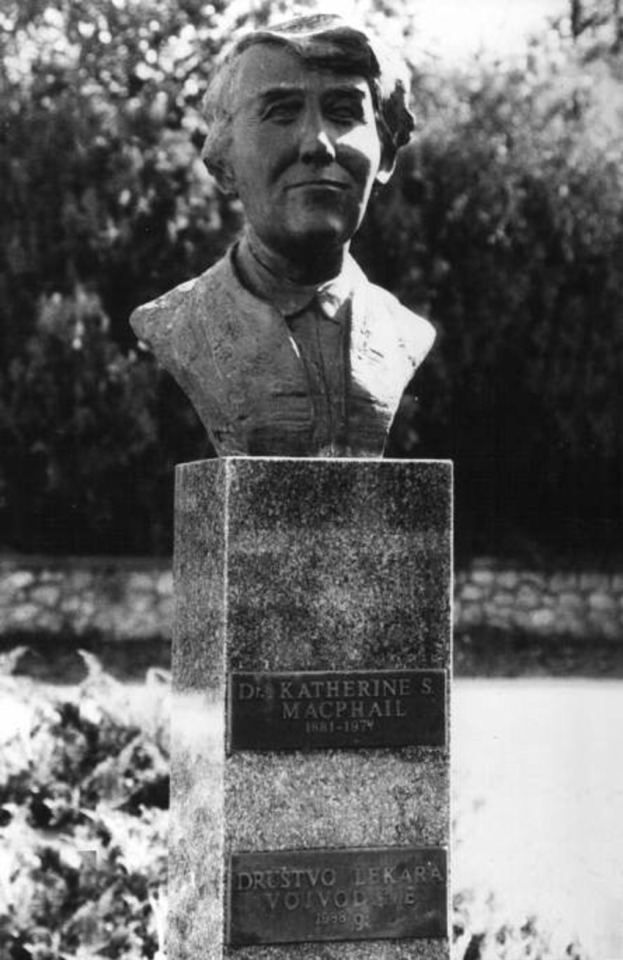
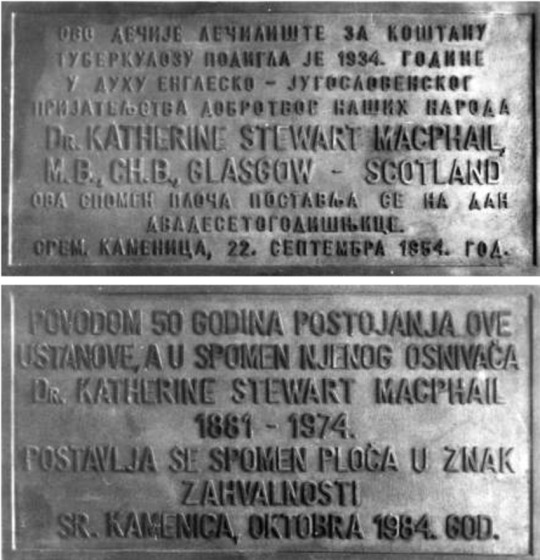
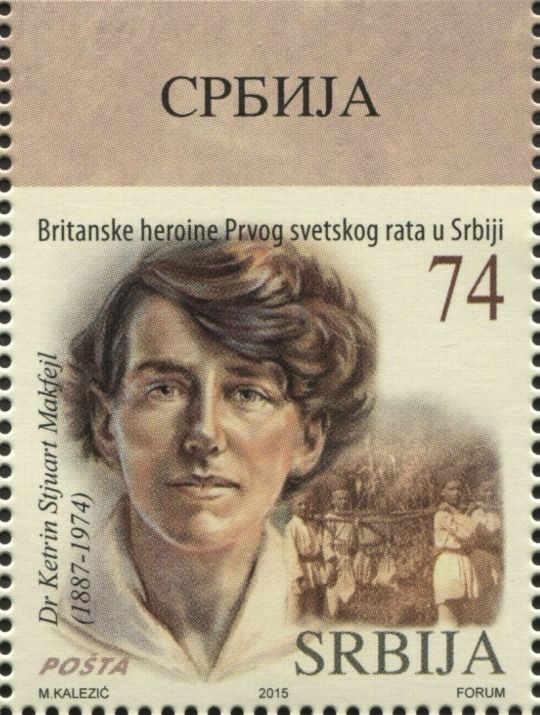
Katherine Stewart Macphail born on 30 October 1887 at Whifflet, Coatbridge.
This is another one of those posts that I will say not many people will know the name here at home, but in Serbia she was regarded as a national hero. Just short of her nineteenth birthday she matriculated at Queen Margaret College, University of Glasgow, to study medicine in, what was at that time, in 1906, still a separate women's department, and the University had only been granting medical degrees to women for just over a decade.
Her father, Donald, was a doctor, and Katherine followed in his footsteps. Her undergraduate record suggests she was a conscientious, bright student and her name appears several times on the prize-list. In her first year she gained a second-class certificate in Practical Zoology. The following year, 1907-1908, she took a first class certificate in Physiology, and in subsequent years, second class certificates in Anatomy (1908-1909) and Surgery (1910-1911). She graduated MB ChB in 1911. In other words, a very smart cookie and it ran in the family, her sister Isabel Macphail, had graduated MA the previous year.
When war broke out, the sisters offered their services to the Scottish Women's Hospitals. Women were not permitted to serve in the armed forces, but a group of energetic medical women, spear-headed by Edinburgh graduate Elsie Inglis, equipped and staffed their own hospitals, with the support of the National Women's Suffrage Societies.
Their offer of these facilities to the Government at home was turned down, but the French showed more willing and the first of the Scottish Women's Hospitals for Foreign Service was set up at Royaumont towards the end of 1914. Further hospitals followed in Serbia in early 1915. Isabel and Katherine set off for Serbia, Isabel as an orderly, Katherine as a surgeon. Apparently, Katherine was initially worried about what the other members of the unit would be like. She wrote:
We knew we were being sent out under the auspices of the Suffrage Societies, and each was afraid that every other was a strong supporter, but were much relieved to find that almost none of us was what might be called 'strong', and that Serbia was the common bond, not suffrage.
When she arrived there, she and another junior doctor, Adeline Campbell, were dismayed by the tasks they were given to do at Kragvievatz, and felt that an orderly could have done them. They persuaded their superior, Dr Soltan, to release them, and they went on to the Military Hospital at Belgrade, incurring the wrath of the committee of the Scottish Women's Hospital, who declined to employ Katherine again. Undeterred, Katherine continued her lifetime's work in Serbia.
After the war Katherine remained in Serbia, running her own small hospital, the Anglo-Serbian Children's Hospital in Belgrade with some funding from the Scottish Women's Hospitals and the Save the Children Fund. Her war work had been honoured by the Serbian government, which conferred the distinction of the Serbian Order of St Sava and the Serbian Red Cross.
Her work was far from finished, however. In 1934 she established the English-Yugoslav Hospital for Treatment of Osteoarticular Tuberculosis in Sremska Kamenica. She continued her work there until 1941, when she and other British residents were taken prisoner by the Germans.
She was repatriated, but returned to Belgrade in 1945 with one of the first relief units. Under a new post-war regime, foreigners were less welcome. After the nationalisation of the hospital she left for Scotland in 1949 and settled in St Andrews, where she lived until her passing in 1974 aged 86.
Pics include a memorial stamp issued in 2015, one of five that featured Scottish women who worked as doctors, nurses and drivers, the other four being , Dr Elsie Inglis, Dr Isabel Gallowey Hutton, Evelina Haverfield and Dr Elizabeth Ross.
15 notes
·
View notes
Text
Celebrate the legendary grandmaster Michael Moorcock’s birthday with 20% off on THE BEST OF MICHAEL MOORCOCK
*NOW THROUGH CHRISTMAS, get THE BEST OF MICHAEL MOORCOCK for 20% off!*
Sale applies to both print and digital editions. Prices only applicable through Tachyon site. Free media mail shipping within the US.

Source: A.V. CLUB
Not only did the singular Michael Moorcock create numerous legendary characters such as the definitive fantasy anti-hero Elric, the proto-cyberpunk Jerry Cornelius, and arguably the first modern steampunk protagonist Oswald Bastable, but he pioneered the concepts of the multiverse and as the editor of New Worlds, ushered in the New Wave literary movement.

His over 100 novels include notable works such as Stormbringer (1965), The Final Programme (1968), Behold the Man (1969), The Warlord of the Air (1971), Gloriana, or the Unfulfill’d Queen (1978), The War Hound and the World’s Pain (1981), Mother London (1988), Colonel Pyat sequence (Byzantium Endures [1981], The Laughter of Carthage [1984], Jerusalem Commands [1992], and The Vengeance of Rome [2006]), and The Whispering Swarm [2015]. 2018 saw two new Moorcock’s works: the Jerry Cornelius adventure, Pegging the President, and the French edition of Kaboul, which completes the My Experiences in the Third World War sequence.

Befitting the seminal nature of his career, Moorcock has been awarded the 1993 British Fantasy Award (Committee Award), 2000 World Fantasy Award for Life Achievement, 2004 Prix Utopiales “Grandmaster” Lifetime Achievement Award, 2004 Bram Stoker Award for Lifetime Achievement in the horror genre, 2008 Damon Knight Memorial Grand Master Award, and In 2008, The Times named Moorcock in its list of “The 50 greatest British writers since 1945”. Among the numerous accolades for his individual works include the 1967 Nebula Award (Behold the Man), four BFA August Derleth Fantasy Awards (The Knight of the Swords [1972], The King of the Swords [1973], The Sword and the Stallion [1975], and The Hollow Lands [1976]), 1974 British Fantasy Award (Best Short Story, “The Jade Man’s Eyes”), 1977 Guardian Fiction Award (The Condition of Muzak), 1979 John W. Campbell Memorial Award for Best Science Fiction Novel (Gloriana), and 1979 World Fantasy Award (Gloriana).

His shorter works have been collected in several volumes including The Deep Fix (1966), The Time Dweller (1969), Moorcock’s Book of Martyrs (1976), The Opium General (1984), Lunching with the Antichrist (1995), Earl Aubec (1993), Tales from the Texas Woods (1997), London Bone (2001), and THE BEST OF MICHAEL MOORCOCK (2009), which recently enjoyed its first digital edition as part Tachyon’s Particle Books line. Among his many edited anthologies are Best SF Stories From New Worlds (1-8; 1968-74), The Traps of Time (1968), Before Armageddon (1975), England Invaded (1977), and The New Nature of the Catastrophe (with Langdon Jones; 1993).

The polymath Moorcock impressive output has also included work in comics, music, film, and criticism. As if all this wasn’t enough, he’s the maintainer of The Jack Trevor Story Memorial Cup, whose previous winners include Howard Waldrop and Steve Aylett.

Michael and Linda Moorcock present the Jack Trevor Story Memorial Cup (aka the Prix Jack Trevor Story) to Howard Waldrop during Armadillocon 31. (photo: Jayme Lynn Blaschke)
All of us at Tachyon wish the extraordinary Michael, a happy birthday. May the winds of limbo continue to roar!
For more info on THE BEST OF MICHAEL MOORCOCK, visit the Tachyon page.
Tachyon pageCover design by Elizabeth Story
#michael moorcock#birthday#the best of michael moorcock#final programe#kaboul#pegging the president#linda moorcock#howard waldrop#mother london#gloriana#earl aubec#elric#the whispering swarm#jack trevor memorial cup
3 notes
·
View notes
Text

6 September 2024




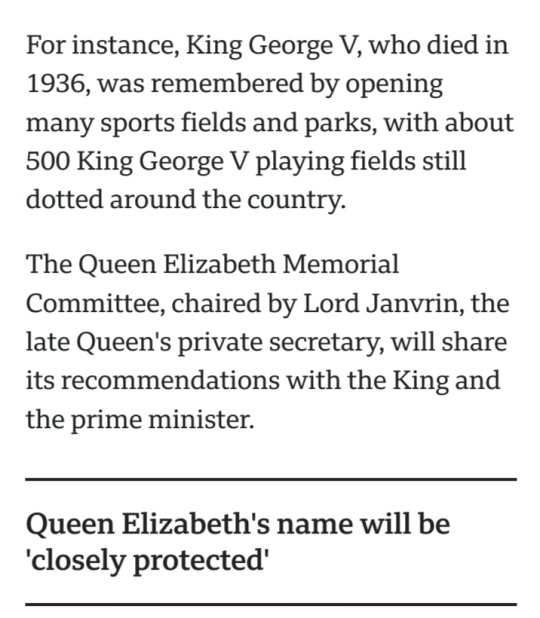


#Queen Elizabeth II#British Royal Family#Buckingham Palace#St James's Park#Marlborough Gate#The Mall#The Queen Elizabeth Memorial Committee#Lord Janvrin#official memorial#statue#Royal Park#monument#legacy#Royal Household
11 notes
·
View notes
Text
Kensington Memorial Park Masterplan, London
Kensington Memorial Park Masterplan, St Quintin Conservation Area London Property, English Building Renovation
Kensington Memorial Park Masterplan
2 June 2022
Simone de Gale Architects wins Kensington Memorial Park Masterplan
Design: Simone de Gale Architects
Location: Kensington, West London, England, UK
Office Retail:
Kensington Memorial Park Masterplan News
The Royal Borough of Kensington and Chelsea has appointed Simone de Gale Architects as Lead Architect and Principal Designer to the project. Designs are underway with a view to gain planning permissions in 2022, and complete construction in time to launch in 2023.
Simone de Gale’s proposals for the Kensington Memorial Park Masterplan have been developed with the design ethos to retain, reinvigorate and connect. The design is sympathetic to the surrounding vicinity and reflective of the RBKC character as defined in the St Quintin Conservation Area. Simone de Gale’s proposals have introduced elements of traditional construction and combined this elegantly with modern design and contemporary materials.
Grounds Maintenance building design:
The proposals are relatively generous in its interpretation of the design brief with an emphasis on improved circulation and use of the playing fields and social areas. New buildings will replace existing dilapidated constructions including the following accommodation; sports changing rooms, offices and facilities for grounds maintenance staff, food and drink retail unit, and public facilities for visitors to the parks. The proposals provide an allowance for soft and hard landscaping such as widening of paths and allocation of zones to congregate. The total development is 10,000sqft including new buildings and landscaping combined.
The land located at St Mark’s Road was bought in 1923 with funds provided by Kensington War Memorial Committee. They wanted to create a suitable tribute to those who had given their lives in the First World War. Ever since it operated as a public park equipped in pleasant formal areas, a children’s playground, tennis, football, junior cricket and One O’clock club (managed by Family and Children’s Services) and public facilities.
Public facilities building:
In 2016, HRH Prince William the Duke of Cambridge commemorated the park as a Centenary Field, in honour of the British soldiers who died in World War I. Being appointed Lead Architect for the Kensington Memorial Park carries a historical significance, in particular the announcement made during the week of HRH Queen Elizabeth II Platinum Jubilee, and above all is a project dedicated to bettering the experience of architecture and environment for residents and workers within the vicinity. In her own words Simone commented:
Office Retail building design:
“It is exhilarating to have won the competition for an amazing masterplan in the borough where we are based and operate to deliver highest standard of architecture and masterplan design. We believe the delivery of this project will deepen our relations with the borough and provide a platform for bringing our design solutions to the neighbourhood where we live and work. We are truly privileged.”
Sports changing building:
On winning the award, RBKC Authority said, “In terms of the technical envelope, Simone’s design responded thoroughly to the brief with consideration given to the consultation results, onsite issues and opportunities. Simone’s submission demonstrated significant strengths in relation to social value…particularly their pledge to use suppliers on the RBKC local supplier chain.”
Office Retail design:
The project is also benefactor of an RBKC Green Fund grant. The project therefore has various green technologies incorporated into the scheme. As a company who is signatory to the RIBA’s Carbon Net Zero 2030 Challenge, the project is committed to various operational and embodied carbon targets.
Simone de Gale, founder and CEO of Simone de Gale Architects, Top-Award winning practice with a centrally located office on 21 Knightsbridge has proven track record of revitalising public spaces, retail and commercial buildings, as well as luxury properties in Kensington and Chelsea, Westminster and City of London. Some of her most prestigious projects within Kensington and Chelsea include former residences of royal members and various celebrities.
Grounds Maintenance design:
Simone de Gale Architects 21 Knightsbridge Belgravia, London SW1X 7LY United Kingdom
Masterplan building designs
Kensington Memorial Park Masterplan, London images / information received 010622 from Simone de Gale Architects
Location: Kensington Memorial Park, west London, UK
Kensington Architecture
Contemporary Buildings in Kensington
Lancer Square, Kensington Church Street Landscape design: Scape Design; Buildings design: Squire & Partners image courtesy of architects practice Lancer Square Kensington
Kensington Mid-Century Home Design: Nash Baker Architects photo : French + Tye Kensington Mid-Century Home
Kensington Forum, Cromwell Road Design: SimpsonHaugh and Partners image courtesy of developer Kensington Forum Development
145 Kensington Church Street by SPPARC photo © Ed Reeve 145 Kensington Church Street
21 Young Street Kensington Arbour artwork by Shaun Leane photo : Milton Haworth 21 Young Street Kensington
Art Gallery Hub in South Kensington
New Build in Kensington Palace Gardens
Trevanion Road House West Kensington
Artist’s House Kensington
Kensington Palace
Architecture in London
Contemporary Architecture in London
London Architecture Links – chronological list
London Architecture Walking Tours
West London Buildings
London Architect
Comments / photos for the Kensington Memorial Park Masterplan, London designed by Simone de Gale Architects page welcome
The post Kensington Memorial Park Masterplan, London appeared first on e-architect.
0 notes
Text






7th March 2023
The Princess Royal, with her husband Sir Tim Laurence, visited Sandown Park on Tuesday, March 7, where she presented the trophy to the winners of a race named in memory of her grandmother, The Queen Mother.
The race, called the ‘Queen Elizabeth, The Queen Mother Memorial Amateur Jockeys’ Handicap Hurdle‘, is an annual contest held at the Surrey racecourse, with the 2023 edition being won by Mayhem Mia.
The six-year-old mare is trained by Chris Honour in Devon and was ridden to victory by Private Vincent Webster of the Irish Army.
The content is restricted to amateur jockeys who are either serving or retired members of the military.
After Mayhem Mia crossed the winning line in front, Princess Anne presented the trophy to the horse’s delighted connections.
The race, formerly known as the Annington Amateur Riders’ Handicap Hurdle, was renamed in honour of The Queen Mother back in 2015.
Her Late Majesty was one of jump racings biggest champions, and was a regular visitor to Sandown Park until her death in 2002 at the age of 101.
For over three decades, she was Patron of the Grand Military Race Committee, and was a huge supporter of the race that is today held in her honour.
The Queen Mother had well over 400 wins as an owner, including five Grand Military Gold Cups, a race that was also held on Tuesday at Sandown.
After the death of her mother, The Queen took over as Patron of the Grand Military Race Committee, a position she still holds today.
By Charlie Proctor | Royal Central
#🗣️ tim turn around#you can just about see Tim in the last photo 👀😂#I love Anne’s red pillbox hat#princess anne#princess royal#tim laurence#timothy laurence#equestriAnne
79 notes
·
View notes
Text
HISTORY OF SAINT JAMES’: HADOW MEMORIAL TABLET, PART II
03/30/2016
http://saintjameswarrenton.org/history-of-saint-james-hadow-memorial-tablet/
http://saintjameswarrenton.org/history-saint-james-hadow-memorial-tablet-part-ii/
BY SJECWARRENTON
��No Star is Ever Lost / We Have Once Seen”
In the nave, on the right-hand wall between the first two windows, is a marble tablet in memory of Ian Lindsay Lunsford Hadow. Placed there in October 1935, it memorializes a young boy, age 7, who was born and died in England at the home of his parents. Ian Hadow’s short life was from 1927 to 1935. On his mother’s side, he had roots in Virginia.
Ian’s parents, Robert Henry Hadow and Elizabeth Lindsay Lomax, were married at Saint James’ Church on June 30, 1925, with the Rev. Paul Bowden officiating. The Parish Register shows the groom’s residence as Srinagar, Kashmir (India); the bride’s residences are shown as Washington, D. C. and Warrenton, Virginia.
Elizabeth’s father was the renowned architect Waddy Butler Wood (1869-1944), who designed many of the great houses and buildings in the City of Washington. His wife, also named Elizabeth, (1874-1951), was a member of the prominent Lomax family of Warrenton.* In addition to their Washington residence, Mr. and Mrs. Wood lived at Leeton Forest on Lees Ridge Road, Warrenton. To illustrate ties with Saint James’, in 1917 Waddy Wood donated plans for a new rectory adjacent to the church, completed around 1920 – and which happily serves that purpose today.
Back to young Ian Hadow: When he came from England to stay with his grandparents, Mr. and Mrs. Waddy Wood, Ian was baptized at Saint James’ Church. We can speculate that the tablet memorializing Ian, with its thoughtful verse, was designed by his grandfather, famed architect Waddy Wood.
*Following Lincoln’s assassination, an aunt, Virginia Lomax, was visiting in Washington and was imprisoned with Mary Surratt, under suspicion, owing to her brother’s high rank in the Confederate Army – Major Gen. Lindsay Lomax of Warrenton (1835-1913).
Compiled: History Committee – Richard Gookin February 2016
Sources: Parish Register; Warrenton, Virginia – A Unique History of 200 Year, Fauquier Democrat of 10/30/35. File: Memorial Tablet
HISTORY OF SAINT JAMES’: HADOW MEMORIAL TABLET, PART II

Readers may recall the previous article in which the memorial tablet to Ian Lindsay Lunsford Hadow was described. Although Ian was born in England and died there at age 7, his mother was from a Warrenton family and had married an Englishman. When Ian came from England to stay with his Warrenton grandparents, he was baptized at Saint James’, the family parish.
Fortuitously, fellow parishioner Eileen Burgwyn kindly wrote on March 10 informing of the origin of the quotation on the memorial tablet —
“No star is ever lost we once have seen”
Eileen explained that the quotation was taken from a narrative poem by Adelaide Anne Procter called “A Legend of Provence.” A. A. Procter was said to be the favorite poet of Queen Victoria. This thoughtful quotation comes from the last stanza of the poem (emphasis added):
And thus the Legend ended. It may be Something is hidden in the mystery, Besides the lesson of God’s pardon shown, Never enough believed, or asked, or known. Have we not all, amid life’s petty strife, Some pure ideal of a noble life That once seemed possible? Did we not hear The flutter of its wings, and feel it near, And just within our reach? It was. And yet We lost it in this daily jar and fret, And now live idle in a vague regret. But still our place is kept, and it will wait, Ready for us to fill it, soon or late: No star is ever lost we once have seen, We always may be what we might have been. Since Good, though only thought, has life and breath, God’s life—can always be redeemed from death; And evil, in its nature, is decay, And any hour can blot it all away; The hopes that lost in some far distance seem, May be the truer life, and this the dream.
CATEGORIES GENERAL
TAGS ADELAIDE ANNE PROCTER, HISTORY, HISTORY OF SAINT JAMES, IAN LINDSAY LUNSFORD HADOW
0 notes
Text

Steven Spielberg Wins Israel's Genesis Prize for Films, Philanthropy
The $1 million award is granted each year to a person for their professional achievements, contributions to humanity and commitment to Jewish values.
Steven Spielberg has been awarded Israel's prestigious 2021 Genesis Prize in recognition of his contribution to cinema, his philanthropic works and his efforts to preserve the memory of the Holocaust, organizers announced Wednesday.
The $1 million award is granted each year to a person for their professional achievements, contributions to humanity and commitment to Jewish values. Previous recipients have donated the prize to philanthropic causes, though Spielberg, who was only notified of the honor late Wednesday, did not immediately comment on his plans.
"The Genesis Prize celebrates Steven Spielberg's unique talent, his commitment to making the world a better place, and his unparalleled contribution to teaching the post-war generations about the horrors of the Holocaust," said Stan Polovets, co-founder and chairman of the Genesis Prize Foundation.
Spielberg is one of the most successful and influential filmmakers of all time, with a string of blockbusters to his name. They include Jaws, E.T. the Extra Terrestrial, Raiders of the Lost Ark and Jurassic Park. He has won three Academy Awards for his work on Schindler's List and Saving Private Ryan and numerous other industry recognitions.
At a 2018 screening marking the 25th anniversary of Schindler's List, Spielberg said no work had affected him like the landmark Holocaust drama, which collected a total of seven Oscars.
"There was trauma everywhere. And we captured the trauma. You can't fake that," he said at the time. "There were whole sections that go beyond anything I've ever experienced or seen people in front of the camera experience."
After the film, for which he did not accept a paycheck and whose proceeds he donated to charity, Spielberg founded the USC Shoah Foundation with a $10 million grant to film interviews with survivors and witnesses of the Holocaust. The project has conducted some 55,000 interviews in 32 languages with survivors from 56 countries. It also is working to preserve the memory of 20th-century genocides and mass killings in Cambodia, Armenia and Rwanda.
Spielberg's other charitable works include the Righteous Persons Foundation, formed to preserve Jewish stories and promote social activism. It has given away over $100 million in grants to Jewish causes. He is chairman emeritus of the Starlight Children's Foundation, which helps children with life-threatening conditions. He has donated $30 million to the Motion Picture and Television Fund to provide health care to older people who worked in the film and TV industries. His Wunderkind Foundation supports health, arts, youth and educational causes.
His accomplishments and charitable works have resulted in numerous recognitions, including the Presidential Medal of Freedom, France's Legion d'Honneur, Germany's Federal Cross of Merit, an honorary knighthood from Queen Elizabeth II and Israel's presidential medal of distinction.
The Genesis Prize was inaugurated in 2014 and is run in a partnership between the private Genesis Prize Foundation and the chairman's office of the Jewish Agency, a nonprofit group that is closely linked to the Israeli government. The prize is funded by a $100 million endowment established by the foundation.
For the first time, the foundation solicited opinion online about its selection. It said 200,000 Jews cast votes. Although a prize committee made the final decision, it said the fact that Spielberg received the most votes was a "major determining factor."
The prize is usually awarded at a gala event in Jerusalem each June attended by Israel's prime minister. But due to the coronavirus pandemic, it is unclear whether the event will be held this year. The award ceremony for last year's winner, former Soviet political prisoner Natan Sharansky, was held virtually.
Previous winners have included businessman and former New York City Mayor Michael Bloomberg, actor Michael Douglas, violinist Itzhak Perlman, sculptor Sir Anish Kapoor, actress Natalie Portman; New England Patriots owner Robert Kraft and Sharansky.
In 2018, Portman snubbed the prize ceremony because she did not want to appear to be endorsing Prime Minister Benjamin Netanyahu. The same year, the late U.S. Supreme Court Justice Ruth Bader Ginsburg was granted a special lifetime achievement award.
0 notes
Text
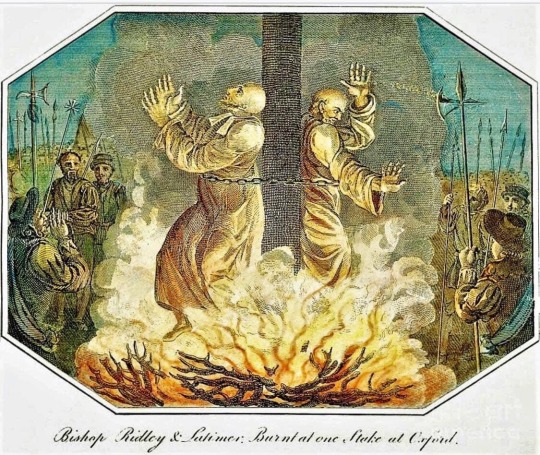
Today, the Church remembers the Oxford Martyrs.
Ora pro nobis.
When Henry the Eighth of England died in 1547 AD, he left three heirs: his son Edward and his two daughters, Mary and Elizabeth. King Henry VIII had separated the Church of England from the Roman Catholic church, but he had not reformed the church's practices or doctrines.
On Henry's death, his young son Edward became King. Many of Edward's advisors tried to move the English Church in the direction of the Continental Protestant Reformation, especially the reforms of Calvinism. Three such men were Nicholas Ridley, Hugh Latimer, and Thomas Cranmer. Under the influence of such counselors, young Edward became a staunch Protestant (or at least his advisors were). Under his rule, the church services, previously in Latin, were translated into English, and other changes were made.
When Edward died, the throne passed to his sister Mary in 1553 AD, who was firmly Roman Catholic in her beliefs. She was determined to return England to union with the Pope. With more diplomacy, she might have succeeded. But she was headstrong and would take no advice. Her mother had been Spanish, and she was determined to marry the heir to the throne of Spain, not realizing how much her people (of all religious persuasions) feared that this would make England a province of the Spanish Empire.
She insisted that the best way to deal with heresy was to burn as many heretics as possible. (It is worth noting that her husband was opposed to this.) In the course of a five-year reign, she lost all the English holdings on the continent of Europe, she lost the affection of her people, and she lost any chance of a peaceful religious settlement in England. Of the nearly three hundred persons burned by her orders, the most famous are the Oxford Martyrs, commemorated today.
When Mary became Queen of England, one of her first acts was to arrest Bishop Ridley, Bishop Latimer, and Archbishop Thomas Cranmer. After serving time in the Tower of London, the three were taken to Oxford in September of 1555 to be examined by the Lord's Commissioner in Oxford's Divinity School. All three were found guilty of heresy and treason, and sentenced to death by burning at the stake.
The scholar Nicholas Ridley had been a chaplain to King Henry VIII and was Bishop of London under his son Edward. He was a preacher beloved of his congregation whose very life portrayed the truths of the Christian doctrines he taught. In his own household he had daily Bible readings and encouraged Scripture memory among his people. Nicholas Ridley became an adherent of the Protestant cause while a student at Cambridge. He was a friend of Archbishop Cranmer and became private chaplain first to Cranmer and then to King Henry. Under the reign of Edward, he became bishop of Rochester, and was part of the committee that drew up the first English Book of Common Prayer. When Ridley was asked if he believed the pope was heir to the authority of Peter as the foundation of the Church, he replied that the church was not built on any man but on the truth Peter confessed -- that Christ was the Son of God. Ridley said he could not honor the pope in Rome since the papacy was seeking its own glory, not the glory of God.
Hugh Latimer was famous as a preacher. He was Bishop of Worcester in the time of King Henry, but resigned in protest against the King's refusal to allow the Calvinist Protestant reforms that Latimer desired. Latimer's sermons speak little of doctrine; he preferred to urge people to upright living and devoutness in prayer. His sermons emphasized that all people should serve the Lord with a true heart and inward affection, not just with outward show. Latimer's personal life also re-enforced his preaching. He was renowned for his works, especially his visitations to the prisons.
Neither Ridley nor Latimer could accept the Roman Catholic mass as a sacrifice of Christ. Latimer told the commissioners, "Christ made one oblation and sacrifice for the sins of the whole world, and that a perfect sacrifice; neither needeth there to be, nor can there be, any other propitiatory sacrifice." These opinions were deeply offensive to Roman Catholic theologians.
Both Ridley and Latimer were burned at the stake in Oxford on this day, October 16, 1555.
As he was being tied to the stake, Ridley prayed, "Oh, heavenly Father, I give unto thee most hearty thanks that thou hast called me to be a professor of thee, even unto death. I beseech thee, Lord God, have mercy on this realm of England, and deliver it from all her enemies."
Ridley's brother had brought some gunpowder for the men to place around their necks so death could come more quickly, but Ridley still suffered greatly. With a loud voice Ridley cried, "Into thy hands, O Lord, I commend my spirit...", but the wood was green and burned only Ridley's lower parts without touching his upper body. He was heard to repeatedly call out, "Lord have mercy upon me! I cannot burn..Let the fire come unto me, I cannot burn." One of the bystanders finally brought the flames to the top of the pyre to hasten Ridley's death.
Latimer died much more quickly; as the flames quickly rose, Latimer encouraged Ridley, "Be of good comfort, Mr. Ridley, and play the man! We shall this day light such a candle by God's grace, in England, as I trust never shall be put out."
While convicted and sentenced on the same day as Latimer and Ridley, Cranmer was executed five months later. Thomas Cranmer was Archbishop of Canterbury in the days of Henry, and defended the position that Henry's marriage to Katharine of Aragon (Spain) was null and void. When Edward came to the throne, Cranmer was foremost in translating the worship of the Church into English (his friends and enemies agree that he was an extraordinarily gifted translator) and securing the use of the new forms of worship. When Mary came to the throne, Cranmer was in a quandary. He had believed, with a fervor that many people today will find hard to understand, that it is the duty of every Christian to obey the monarch, and that "the powers that be are ordained of God" (Romans 13). As long as the monarch was ordering things that Cranmer thought good, it was easy for Cranmer to believe that the king was sent by God's providence to guide the people in the path of true religion, and that disobedience to the king was disobedience to God.
Now Mary was Queen, and commanding him to return to the Roman obedience. Cranmer five times wrote a letter of submission to the Pope and to Roman Catholic doctrines, and four times he tore it up. In the end, he submitted. However, Mary was unwilling to believe that the submission was sincere, and he was ordered to be burned at Oxford on 21 March 1556. At the very end, he repudiated his final letter of submission, and announced that he died a Protestant. He said, "I have sinned, in that I signed with my hand what I did not believe with my heart. When the flames are lit, this hand shall be the first to burn." And when the fire was lit around his feet, he leaned forward and held his right hand in the fire until it was charred to a stump. Aside from this, he did not speak or move, except that once he raised his left hand to wipe the sweat from his forehead.
These three martyrs were only a small part of the many hundreds who would be murdered on all sides of the Reformation and Counter Reformation era. It is a scandal to Jesus Christ and his Church that those who profess to be his disciples should ever cause harm to each other or to anyone. The Church suffers still today for the grievous sins of Christians killing each other, and blaspheming by daring to claim such deeds are done in the name of God. Our sad divisions remain, and we must pray with our Savior Jesus that all our sad divisions may cease, that we may be one even as Jesus and the Father are one.
O God the Father of our Lord Jesus Christ, our only Savior, the Prince of Peace: Give us grace seriously to lay to heart the great dangers we are in by our unhappy divisions; take away all hatred and prejudice, and whatever else may hinder us from godly union and concord; that, as there is but one Body and one Spirit, one hope of our calling, one Lord, one Faith, one Baptism, one God and Father of us all, so we may be all of one heart and of one soul, united in one holy bond of truth and peace, of faith and charity, and may with one mind and one mouth glorify thee; through Jesus Christ our Lord.
Amen.
#father troy beecham#christianity#troy beecham episcopal#jesus#father troy beecham episcopal#saints#god#salvation#peace#martyrs
1 note
·
View note
Photo
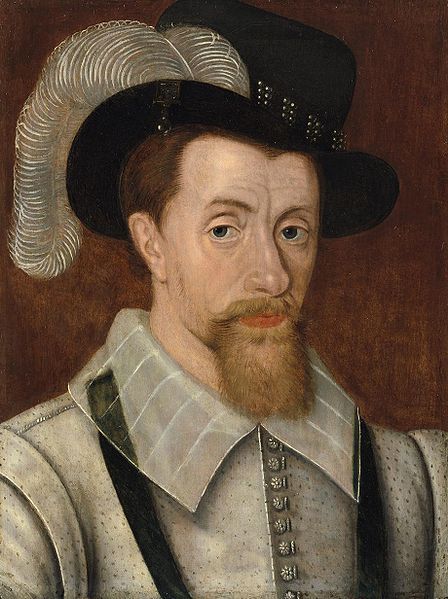
On July 29th 1567 King James VI was crowned at Stirling.
Picking up from last wednesday's post when Mary was forced to abdicate, the powers that be wasted no time in getting the formalities over and crowning the 13 month old son of Lord Darnley. The last time James saw his mother, Mary was in 1567, when he was barely a year old.
Because of his young age a regent was appointed to act as head of state. In fact, during his minority a succession of regents were chosen to rule in his stead.
The first regent was Mary’s half brother, James Stuart, Earl of Moray, Upon the Earl’s death in 1570, Matthew Stewart, Earl of Lennox, who was James grandfather, became the second regent. His regency didn’t last very long, as he died in 1571. The third regent was James’s guardian, John Erskine, the first Earl of Mar whose regency also didn’t last long, he died in 1572. The fourth and last of the regents was the very powerful James Douglas, Earl of Morton.
In spite of his mother’s Catholic faith, James was brought up in the Protestant religion. He was educated by men who had empathy for the Presbyterian church. His marriage to Anne of Denmark (a protestant country) no doubt pleased his Protestant subjects.
James VI is said to have had a terrible childhood, much like his forebears, including his great-grandfather. He had been used and abused by his tutors who were just looking to someone to manipulate and to mold into their little puppet. He was then told that his mother was the most horrible person in the world to the point that he did not know what the truth was anymore. When he was a teenager he became very independent and learned to hide his feelings very well but he also started working for his mother’s release, although some historians dispute this.
He was vocal in his opposition for his mother's trial and subsequent execution and I even read that James was "Desperate for his mother's life". He even destroyed the casket letters in 1584, which although may confirm that they may have had actual proof against Mary, was definitely a move so that his mother can rest in peace after her death and that her memory and legacy will stop being trashed and disgraced because of the letters.
Who knows what really went through his mind. Did he really care about her? Or was he was just looking to release her because he was worried that her execution and her bad reputation would also affect him and his chances to get the throne? There is some reason to believe this last one because Fontenay, the French Ambassador, noted that whenever James talked about his mother, he never “inquired anything of the queen or of her health, or her treatment, her servants, her living, and eating, her recreation, or anything similar.” And how could he when he never knew her and the people who raised him kept telling him ugly stuff about her? To those that were closest to the young King, his mother was the devil incarnate.
Whichever was, Elizabeth I was never going to release Mary Queen of Scots anytime soon and she must have made this very clear because the following year in 1585, when James was 19, he agreed with her decision to keep his mother in prison and even called Elizabeth “Madame Mother”. Imagine how this made Mary feel,her only son, the only hope she had to get free, calling her jailer ‘mother’. It was at this point that she started looking for other means to be released. Ultimately we know they all failed.
I didn't really want this to turn into another post about Mary, but she is so involved in the history of it all she will inevitably turn up time and time again. Anyway more on Young james.......
King James was tutored by George Buchanan and Peter Young. He was a dedicated student and by the age of 8 he was fluent in French, Latin, Greek, and English. This stern upbringing would inspire him to appreciate the arts and sciences and encourage the learning of them all throughout his reign, the King once remarked, that he could speak Latin before he could speak his native Scots. Because of his linguistic capabilities, King James typically did not need a translator when conducting business with other heads of state. King James grew into a powerful king with a powerful pen--he had peace at home and abroad, something few of his ancestors could dream of. His motto was His motto was "Beati Pacifici,"--Blessed are the peacemakers, not to mixed up with -Blessed are the cheesemakers, which of course came from The Life of Brian! ;)
King James' great aspiration to be the first King of both Scotland and England was realized in 1603 upon the death of Queen Elizabeth. When he ascended to the English throne that year he had already been king of Scotland for 36 years. He was now known as King James VI of Scotland & I of England. This came with its own dangers, and of course one of the most famous plots in history, still remembered every November in is known as Guy Fawkes Night.
As a Scotsman ruling over the English, the King endured much racism and slander--especially from the once powerful English Lords and Ladies who he replaced with his Scottish countrymen. Unfortunately, many of today's historians look to the writings of hostile sources such as Sir Anthony Weldon and Francis Osborne as accurate descriptions of the king, nowadays we would say, Haters gonna hate!
The king wrote of his enemies: "They quarrel me (not for any evil or vice in me) but because I was a king, which they thought the highest evil, and because they were ashamed to profess this quarrel they were busy to look narrowly in all my actions, and I warrant you a moat in my eye, yes a false report was matter enough for them to work upon."
The thing with King James is he believed in the doctrine of the divine right of kings and the monarch's duty to reign according to God's law and the public good. This would be handed down to his son Charles I and then to Charles II leading to the loss of many lives during their reigns in The English Civil War,The Bishops Wars and of course The Killing Time.
As a lover of the theatre, King James became patron to the troop of one of his most famous subjects--William Shakespeare, the playwright. Shakespeare's troop came to be known as the King's Men. Shakespeare and the King held a special relationship as they both loved literature. It is said Shakespeare wrote his famous play, "Macbeth" specifically for King James. The "Scottish Play" as it is known in theatrical circles may well be one of Shakespeare's most famous plays, but when you look at the real history of Macbeth, the play was basically The Braveheart of it's day!
Afew other facts surrounding James and his legacy, the US Jamestowne is home to the ruins of the first permanent English speaking settlement in the country, and named in his honour.
To this day the translation of the bible he ordered is known as the Authorized King James Bible. He appointed 54 men to the committee who were not only the best linguists and scholars in the kingdom, but in the world. Much of their work on the King James Bible formed the basis for our linguistic studies of today.
King James had a life filled with accomplishments but he was a man acquainted with grief. He was a sickly man who had physical handicaps in his legs and allegedly a tongue that was too large for his mouth! As a result of his unsteady gait, the king had numerous falls, accidents and injuries. He suffered from crippling arthritis, abdominal colic, gout, inability to sleep, weak/spasmic limbs, nausea, frequent diarrhea, and kidney pain. Some believe that he may have had congenital diseases of the nervous system. Sometimes the pain was so great that the king became delirious.
To add to his ill-health, the James it is thought suffered from depression from the death by his eldest son, Prince Henry in 1612 and his Queen in 1619. James VI was no stranger to pain and sorrow.
I didn't set out to put a long post like this together sometimes they just happen, King James VI & I died on March 27th , 1625 at Theobalds Park in Herts, England. He was 58 years old when he died and had been King of Scotland for most of those years, as well monarch of England for 22, he was buried at Westminster Abbey.
Unlike many Scottish monarchs, King James died in his bed at peace with his subjects and foreign countries. He also passed royal power on, intact, to an adult son which was also quite unusual.
18 notes
·
View notes